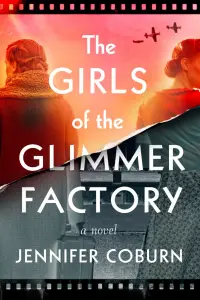San Diego author highlights Nazi propaganda ‘show camp’ in latest novel

SAN DIEGO Jennifer Coburn will discuss her historical fiction novel The Girls of the Glimmer Factory set in the Nazi s Theresienstadt show camp during WWII at La Jolla Riford Library on Aug Based on the real story of the Theresienstadt concentration camp Coburn s talk will begin at p m in the library s society room at Draper Avenue Draper Avenue The Glimmer Factory has been described as a poignant tale of resistance friendship and the dangers of propaganda In German concentration camps a glimmer factory referred to a mica-splitting factory where female prisoners were forced to work Mica or glimmer is a mineral with thin shimmering layers that was used for electrical insulation in Luftwaffe aircraft The work involved slicing the mica into tiny slivers a tedious and dusty process that caused lung diseases among the workers The novel written by Coburn who is Jewish references the Remember Us The Holocaust lecture series which is on exhibit now through June on the Garth Family Reading Level of the Joan Irwin Jacobs Annex at La Jolla Riford Library RUTH is a nonprofit dedicated to documenting and preserving the legacy of Holocaust survivors La Jolla Riford Library s RUTH exhibit highlights the stories of Holocaust survivors who are living in San Diego County The exhibit also showcases critical Holocaust artifacts and World War II memorabilia But there is a real story behind the story of how Coburn researched her bestselling Holocaust novel She desired a deeper understanding of the German concentration camp she was writing about After having digested everything viable about Theresienstadt she knew she had to go even further Realizing various questions could only be answered by really traveling from her Del Cerro home to the Czech Republic Coburn spent several days at the former Theresienstadt ghetto transit camp which the Nazis created for propaganda films and Red Cross inspections What Coburn learned from her Theresienstadt experience has become her mission to share with others Theresienstadt was a model camp to fool the world that Jews were being treated well when it was a propaganda camp Coburn commented She noted Glimmer Factory is her fictional novel telling the story of two childhood best friends reuniting as adults in the camp One is a prisoner declared Coburn The other character is a Nazi working for the Ministry of Propaganda I realized this camp needed a book of its own It needed powerful characters living under increasingly devastating circumstances Coburn noted the Nazis made Theresienstadt appear as if it were a vibrant cultural center There were multiple artists and intellectuals and there were concerts conducted on average twice a night with musical performances particular composed Coburn mentioned The prisoners there used their creativity as a means of survival About people went through the gates of Theresienstadt during years with prisoners there at any given time and at the camp s peak This was not a death camp in the same way Auschwitz was Coburn disclosed People were not working at gas chambers It was a work camp where they worked you to death About people were lucky enough to have survived the camp while died from starvation and ailment In researching Glimmer Factory Coburn noted she flew miles and spent five days at Theresienstadt which she added is a tourist memorial with a museum in an underdeveloped small town I stayed in a hotel that was once prisoner housing she noted I walked the grounds looked at all the pieces of art that are still on the site and let the experience just happen One thing that happened that was a great coincidence was on my very last day there I ran into a group of teen students doing a documentary film Coburn disclosed They took me to an area of tunnels that were made years ago by prisoners who yearned to be remembered and tell the world that their lives mattered They had etched the names of their hometowns and several did drawings Questioned what she d like people to get out of reading The Girls of the Glimmer Factory Coburn stated I would like them to leave knowing more about Theresienstadt than they came in with I want to renew or ignite their curiosity get them to start asking questions about how the Nazis used propaganda tactics and how those tactics can threaten our world in the current era

